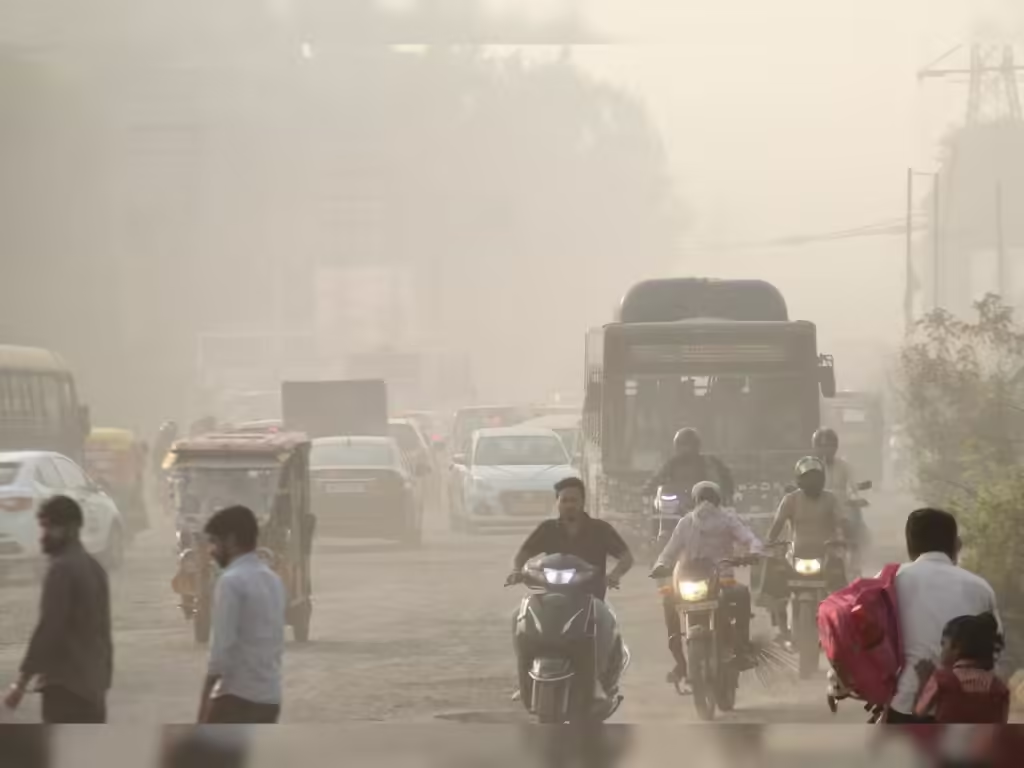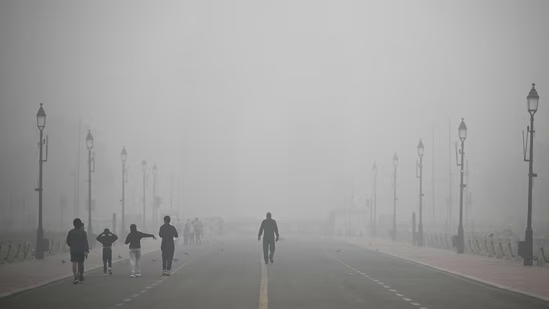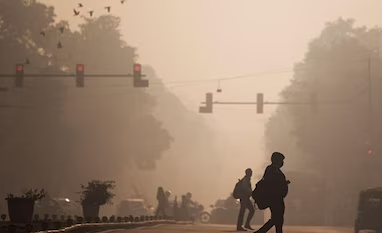Key Highlights:
Delhi’s air quality hit record-breaking low levels as AQI reached a high of 978. Severe smog pollution has serious health implications, meaning smoking about 49 cigarettes daily.
Health Implications: Inhaling Delhi’s Air Equals Inhaling Smoke of About 49 Cigarettes Daily
The alarming AQI levels correspond to serious health hazards. The level of exposure is equivalent to smoking 49 cigarettes daily, increasing further the prospects for respiratory and cardiovascular diseases. Symptoms are reported by residents: long-lasting coughs, irritation of the throat, and breathlessness that call for effective interventions.

Anti-Pollution Measures Directed by Supreme Court
In response to this deteriorating crisis, the Supreme Court of India intervened and ordered Stage IV of GRAP strictly. The Court clearly stated that unless court-approved, these actions shall not be lenient in view of the fact that at the current level of pollution, immediate action is required.

Emergency Measures Under the GRAP Stage IV
Following the directive from the Supreme Court, authorities have enforced Stage IV of GRAP, which is the severest level of emergency measures tailored to counter extreme air pollution. Key measures adopted include:
- Shutting down Educational Institutions: Classes for all grades other than 10 and 12 have been suspended with alternative online studies being undertaken so that students would not be exposed to the hazardous air.
- Building Ban: All construction and demolition activities have been stalled to curb dust and particulate matter in the air.
- Vehicle ban: Stiff control on vehicular movement has been implemented including non-essential diesel trucks and older vehicles which are not in line with BS-VI emission standards.
- Industrial Bans: The non-essential industrial units have been asked to shut down their operations to curb emissions.
- Public Advisories: Residents advised to stay indoors, wear N95 masks when stepping out, and avoid strenuous physical activities.
Impact on Daily Life: Closed Schools, Flight Operations Delayed
Thick Smog Causes Harshest Impacts on Delhi Daily Life and much reduced visibility has resulted in delayed flight operations and difficulties for commuters. Classes have been suspended physically for students as well as for their parents to make a swift shift to an online education platform.
Contributing Factors: Stubble Burning and Weather Conditions
Poor air quality is generated because of a multitude of factors:
- The increase in pollution levels has primarily been contributed by the residue crop burning in other states, such as Punjab and Haryana.
- The low wind speeds and relatively cool temperatures have increased the problem by combining pollutants near the ground surface rather than dispersing.
- Vehicular Emissions: High traffic density and vehicular pollution have further increased the burden of pollution.
Government Response and Public Outcry
Delhi Chief Minister Atishi was criticized for delaying the implementation of GRAP Stage IV measures. The SC rebuked the state government for not acting in time when pollution levels reached an all-time high. The public’s frustration is mounting, as people are demanding long-term solutions to the recurring crisis of pollution.
Comparative Analysis: Air Quality in Neighboring Regions
The crisis of pollution is not only restricted to Delhi alone. The neighboring states also face a problem of poor air quality:
- Haryana: Having an AQI of 631, the citizens inhale levels of air pollution equivalent to smoking 33 cigarettes per day.
- Uttar Pradesh: The AQI of 273 means inhaling the equivalent of 10 cigarettes per day.
- Punjab: The state’s AQI stands at 233, which is translated to smoking more than eight cigarettes every day.
This data clearly depicts the scale of pollution in northern India.
Long-term Solutions: Essential for Sustainable Interventions
Emergency measures are required, but they are never enough to deal with air pollution at its roots. Long-term strategies are required, for example,
- Clean Energy Promotion: Moving toward renewable energy sources so that dependence on fossil fuels is minimized.
- Sustainable Agriculture: Action alternatives to stubble burning, crop residue management technologies .
- Improved Public Transportation: More comprehensive and efficient public transport with lower vehicular emissions.
- Strict Regulations on Emission: Applying very tight emission norms on industries and vehicles.
- Public Awareness Scheme: Creating awareness among the citizens about health hazards due to pollution and adopt eco-friendly practices.
Conclusion: A Call to Action
Delhi’s current air quality crisis puts a question mark on the need for holistic and sustained efforts to combat pollution because millions of health and well-being issues are at stake, appealing for immediate action from authorities as well as the citizens to have clean air in the future.
For Latest News Updates Click Here
